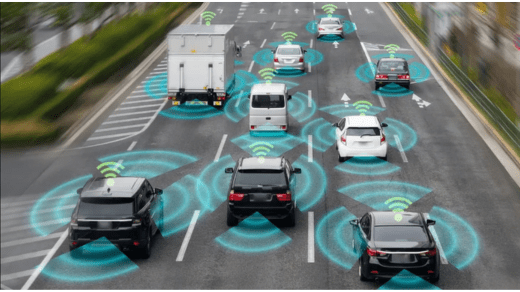Collision detection systems have become an invaluable tool in ensuring the safety of our society. These sophisticated technologies are designed to identify and notify drivers of potential collisions, giving them time to react and prevent accidents. With their widespread adoption in various vehicles, collision detection systems have significantly reduced the number of accidents on our roads, making them an essential aspect of modern transportation. In this article, we will explore how these systems work and their impact on society’s overall safety.
What are Collision Detection Systems?
Collision detection systems, also known as collision avoidance systems or pre-crash warning systems, use a combination of sensors, cameras, radars, and software to continuously monitor the area around a vehicle. These sensors collect data on the speed, distance, and trajectory of nearby objects and analyze them for potential collision risks. If a potential threat is detected, the system will alert the driver through visual or auditory warnings, giving them time to take evasive action.
One of the key features of collision detection systems is their ability to detect both moving and stationary objects. This includes other vehicles on the road, pedestrians, bicyclists, and even animals. This comprehensive approach makes these systems highly effective in preventing accidents caused by human error or unexpected obstacles.
Collision Detection in Factories and Warehouses
While collision detection systems are commonly associated with vehicles, they are also crucial in industrial and warehouse environments. In these settings, automated guided vehicles (AGVs) use collision detection technology to navigate safely around the facility and avoid collisions with other AGVs or humans.
Moreover, collision detection is also utilized in manufacturing processes where heavy machinery operates in close proximity to human workers. These systems can detect when a worker enters a dangerous zone and stop the machine’s operation to prevent accidents.
Collision Detection in Transportation
In the transportation sector, collision detection systems are most commonly found in cars, trucks, and buses. These systems can prevent different types of collisions, including rear-end collisions, lane departure accidents, and pedestrian-related accidents.
One of the most significant benefits of these systems is their ability to assist drivers in making quick decisions during emergencies. For example, if a driver falls asleep at the wheel or experiences a medical emergency, the system can take control of the vehicle and steer it safely to the side of the road or bring it to a stop.
Collision Detection in Hospitals and School Zones
Another notable application of collision detection systems is in hospitals and school zones. In these areas with high foot traffic, these systems can help prevent accidents involving vehicles and pedestrians. The system will alert drivers when a pedestrian enters the vehicle’s path, giving them enough time to stop or slow down.
Moreover, some collision detection systems also have emergency braking capabilities that automatically apply brakes if a potential collision is imminent, reducing the risk of accidents even further.
How Collision Detection Save Lives
The impact of collision detection systems on our society’s safety cannot be overstated. According to a report by the National Highway Traffic Safety Administration, these systems could prevent up to 80% of all car accidents and significantly reduce the severity of those that do occur.
Beyond preventing accidents, collision detection systems also have potential cost-saving benefits for individuals and society as a whole. By reducing the number of accidents, insurance costs can decrease, and healthcare expenses related to road accidents can also go down. If you need collision detection technology to help you with high traffic/impact areas, then contact Hit-not Proximity Detection and they’ll help assess your problem and solve them.
Impact on Society
The implementation of collision detection systems has had a significant impact on society’s safety, especially in the transportation sector. According to a study by the Insurance Institute for Highway Safety, vehicles equipped with forward collision warning and automatic emergency braking systems had 50% fewer rear-end collisions. This translates to thousands of lives saved every year and reduced financial costs from property damage and medical expenses.
Apart from reducing the number of accidents, collision detection systems have also improved overall road safety. The auditory and visual warnings provided by these systems help keep drivers alert and focused on the road, decreasing the risk of other types of accidents such as lane departures or collisions with roadside objects.
Future Developments
As technology continues to advance, collision detection systems are also evolving to become more sophisticated and effective. Some of the latest developments include improved object recognition capabilities, integration with other safety features like adaptive cruise control and lane departure warning, and the use of artificial intelligence for more accurate predictions of potential collisions.
Additionally, there is ongoing research on implementing these systems in autonomous vehicles, which could potentially lead to a future where accidents caused by human error are significantly reduced.
Collision detection systems have revolutionized road safety and played a crucial role in making our society safer. With their ability to detect potential collisions and alert drivers before they happen, these systems have helped prevent countless accidents and save lives. As technology continues to advance, we can expect even more advanced collision detection systems that will further enhance our transportation safety and pave the way for a future with fewer road accidents. So next time you’re behind the wheel of a vehicle equipped with collision detection, remember that it’s not just another fancy feature – it’s a vital tool in ensuring your safety and the safety of those around you.




